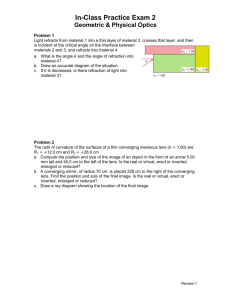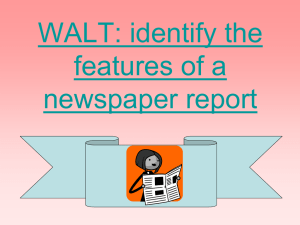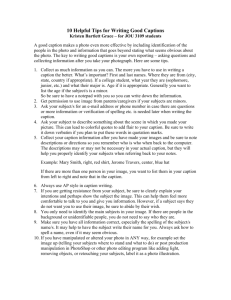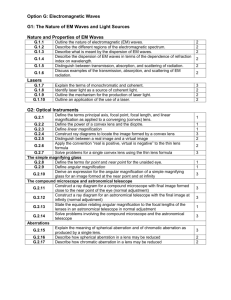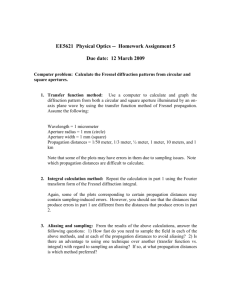Devising your own experiment
advertisement
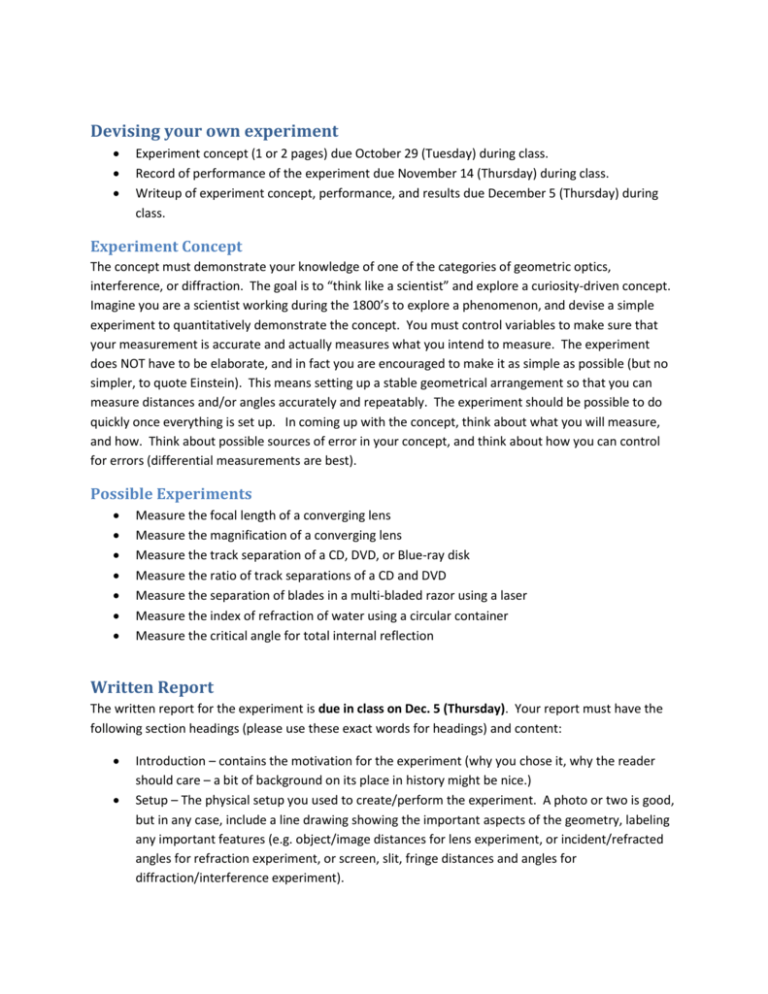
Devising your own experiment Experiment concept (1 or 2 pages) due October 29 (Tuesday) during class. Record of performance of the experiment due November 14 (Thursday) during class. Writeup of experiment concept, performance, and results due December 5 (Thursday) during class. Experiment Concept The concept must demonstrate your knowledge of one of the categories of geometric optics, interference, or diffraction. The goal is to “think like a scientist” and explore a curiosity-driven concept. Imagine you are a scientist working during the 1800’s to explore a phenomenon, and devise a simple experiment to quantitatively demonstrate the concept. You must control variables to make sure that your measurement is accurate and actually measures what you intend to measure. The experiment does NOT have to be elaborate, and in fact you are encouraged to make it as simple as possible (but no simpler, to quote Einstein). This means setting up a stable geometrical arrangement so that you can measure distances and/or angles accurately and repeatably. The experiment should be possible to do quickly once everything is set up. In coming up with the concept, think about what you will measure, and how. Think about possible sources of error in your concept, and think about how you can control for errors (differential measurements are best). Possible Experiments Measure the focal length of a converging lens Measure the magnification of a converging lens Measure the track separation of a CD, DVD, or Blue-ray disk Measure the ratio of track separations of a CD and DVD Measure the separation of blades in a multi-bladed razor using a laser Measure the index of refraction of water using a circular container Measure the critical angle for total internal reflection Written Report The written report for the experiment is due in class on Dec. 5 (Thursday). Your report must have the following section headings (please use these exact words for headings) and content: Introduction – contains the motivation for the experiment (why you chose it, why the reader should care – a bit of background on its place in history might be nice.) Setup – The physical setup you used to create/perform the experiment. A photo or two is good, but in any case, include a line drawing showing the important aspects of the geometry, labeling any important features (e.g. object/image distances for lens experiment, or incident/refracted angles for refraction experiment, or screen, slit, fringe distances and angles for diffraction/interference experiment). Data – List measurements and how they were made. If you used a protractor to measure angles, or got them off a photo, for example, or if you used a ruler (meter-stick) and what the ruling size on the ruler was, etc. Use the same nomenclature used in the text and in your drawing of the previous section. Results – Analysis done to convert measurements into the desired result, including what equations you used. Include errors, either estimated measurement errors (angular measurements to, say ½ degree or whatever you think your precision is, length measurements to 1/32 of an inch, or 1 mm, or whatever) or errors due to estimation of quantities. If you measured the same thing multiple times, you can look at statistical errors. If you do not know how to “propagate” errors to your final result, try using your measurement in the equation for a result, then repeat for your measurement + error, then repeat for your measurement – error, and see how sensitive your result is to the errors. Conclusion – Discuss how well your results match your expectation. Discuss what you may have learned about the experience of devising your own experiment. If you are satisfied, say so. If there is something about your method you would have done differently, discuss that. The overall length should be about 5 text pages. If you have a lot of photos, then it should be longer accordingly. I expect clear and logical writing, at a level that someone technically trained, but without detailed knowledge of the physics could understand and appreciate. Note, all figures and photos must have a caption. If you use MS Word, create a 1 x 2 table, put your photo or drawing in the top table element, and your caption describing the photo or drawing into the bottom table element. Use a one-step smaller font for the caption text. It looks nicer if you eliminate the borders. Here is an example: Figure 1: Someone who fully appreciates the wave nature of light, geometric optics, interference and diffraction.
